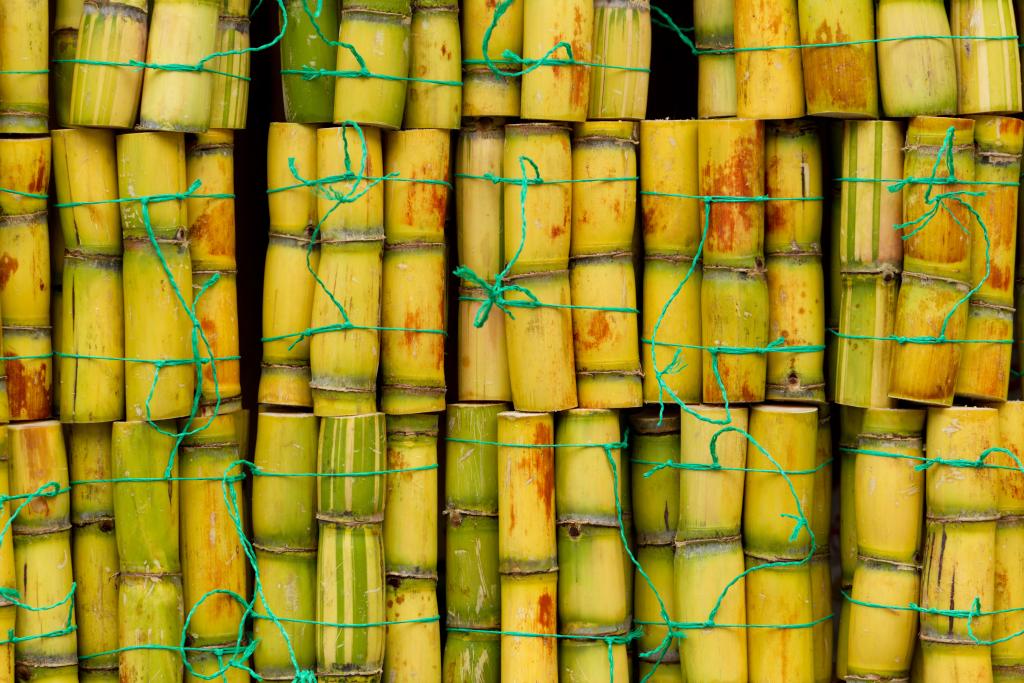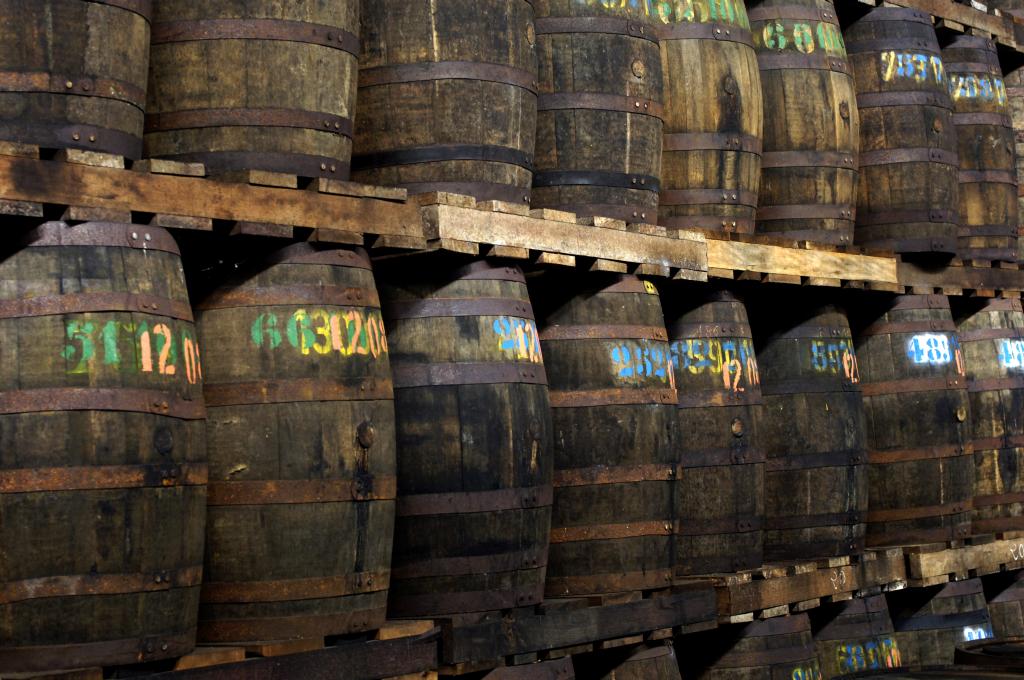Sugar cane – Rum
The manufacture of rum stems from the arrival of sugar cane in the Americas. The first versions of this alcoholic beverage were made from molasses (black treacle), a viscous non-crystallisable by-product of refining sugar cane into sugar. In the late 19th century, after an overproduction of sugar, some distilleries began distilling sugar cane wine, the first rhum agricole/cane juice rum.
From sugar cane, to sugar and rum
Rum is an alcoholic beverage first made when sugar cane arrived on the American continent. Originally from Oceania, sugar cane is a grass with a stalk about five centimetres in diameter and can grow up to six metres tall. The juice in its stalk may contain up to 15% sucrose (saccharose). Over the centuries, sugar cane migrated from east to west: Christopher Columbus brought it to Santo Domingo on his second trip to America in 1493. The conquistadors aimed to produce sugar for export to Europe. Sugar production soon proved successful, although unfortunately at the expense of sizeable slave labour from West Africa. Sugar cane is used to produce more than just sugar. Heat and natural yeasts cause the juice in the stalk to ferment spontaneously and turn it into an alcoholic beverage. The first distilled spirits were made on the island of Barbados, an English colony at the time. In the latter half of the 17th century, Père Labat perfected the distillation process by redistilling the alcohol a second time. This was when rum became a product in its own right and sugar factories became equipped with distilleries. They distilled sugar cane wine, obtained by fermenting molasses or black treacle, the viscous residue of refining sugar cane. In the late 19th century, the discovery of sugar beet led to a decline in sugar cane production and some distilleries began distilling fermented sugar cane juice.
Making rum by fermentation and distillation
Sugar cane is propagated by taking cuttings. The canes are cut into sections each with two or three buds and then buried. Harvesting begins just before the cane flowers, when the sugar concentration has reached its peak. As the sugar accumulates in the lower stalks, these are cut flush with the ground. The stalks are then cut into pieces and run several times through a series of mills. They are watered as they are crushed, as soaking the fibres dissolves the residual sugar, thus increasing the amount of sugar extracted. The resultant cane juice is called ‘vesou’ and the residual viscous liquid is the basis of molasses. Fermenting either sugar cane juice or molasses diluted with water involves yeast breaking down sugar and thus producing alcohol (ethanol). Once this process is complete, the cane wine has an alcohol content of 5% (10 proof), whereas when molasses are used, the alcohol content may reach 10% (20 proof). The liquid is then distilled to separate the water from the alcohol and aromatic substances. Thereafter, the rum is titrated to 70% alcohol (140 proof), and spring water is then added to lower its alcohol content.
Rhum agricole and traditional rum
Rhum agricole is made by fermenting sugar cane juice. This process produces significant amounts of a wide range of aromatic compounds. Sugar rum, aka traditional or industrial rum, is made from molasses diluted with water. Industrial rums are coloured by adding caramel, whereas the amber colour of agricultural rum is the result of ageing it in oak barrels. Pastry chefs use full-bodied Grand Arôme rum, resulting from the fermentation of a mixture of molasses and vinasse, the latter being the residual liquid from the distillation process.
TOUCHARD, Michel- Claude, 1990. L’aventure du rhum. Bordas
CENTRE D’ÉTUDES, DE RECHERCHES ET DE DOCUMENTATION GASTRONOMIQUE, 1999. Trésors de cuisine, tous les produits de A à Z. Genève, Éditions Minerva.
LANGE, Matthieu, 2014. Le rhum des Antilles françaises. Rumporter. [En ligne] 2014 [consulté le 11 mars 2016]. Disponible à l’adresse http://www.rumporter.com/fr/magazines/hors-serie-la-route-du-rhum




